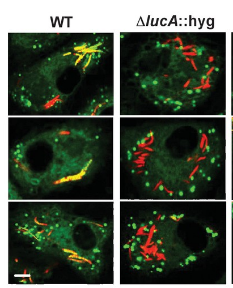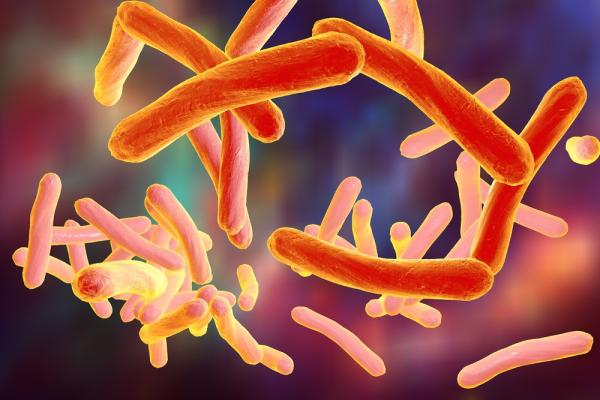Mycobacterium tuberculosis (Mtb), with its mere ~4,000 genes, has been outsmarting us for decades. One look at the numbers illustrates this clearly. The disease caused by Mtb, tuberculosis (TB), is one of the top 10 causes of death in the world. It currently infects roughly 1.5 billion people worldwide and causes 1.8 million deaths every year - most commonly in India, Indonesia, China, Nigeria, Pakistan and South Africa.
As if these numbers were not staggering enough, there is a steady increase in the number of cases of TB with strains that are resistant to antibiotics, or multidrug-resistant TB (MDR-TB). The half a million cases annually make the need for new TB drugs critically important.
The lab of Dr. Brian VanderVen at Cornell University is working on just that. He and his colleagues recently discovered one of the mechanisms in Mtb that is the backbone of its metabolism. Proteins that are required to keep the bacterium alive serve as important drug targets. Forgive the Star Wars reference, but if you want to blow up the Death Star, hitting the reactor core is the only way to go. Given that analogy, this work (published in the journal eLife) identifies what the reactor core is.
Tuberculosis is not your average bacterium. One way in which it is unique is that it uses lipids (fats) from the host to survive for long periods of time. It needs to import those lipids and assemble them so that they can be used, It is part of this process that Dr. VanderVen has uncovered. The protein that he and his colleagues identified, LucA, is located in the membrane of Mtb and works with other proteins to bring lipids in so that they can be utilized. Without LucA, this process falls apart, making it a very important cog in a wheel that is critical for the survival of the bacterium. This can be seen in the figure below. The left column shows pictures of wild type, or normal, Mtb cells. These bacteria (red) are able to import and use the lipids from the host cell. WHen they do, they are seen as yellow. The right column of the figure shows a mutant bacteria strain where the LucA protein is no longer made because the lucA gene has been mutated or changed. In this column, the bacteria stay red because the lipids are no longer being imported. The conclusion is that LucA is required for bringing lipids into the cell.

In addition, LucA is required for full virulence or causing a full infection. LucA's involvement in two separate and critical pathways makes it an ideal drug target. This finding is an important one in the battle against Mtb and may result in further advances in drug discovery.
References:
Rv3723/LucA coordinates fatty acid and cholesterol uptake in Mycobacterium tuberculosis Evgeniya V Nazarova et al. https://elifesciences.org/articles/26969




